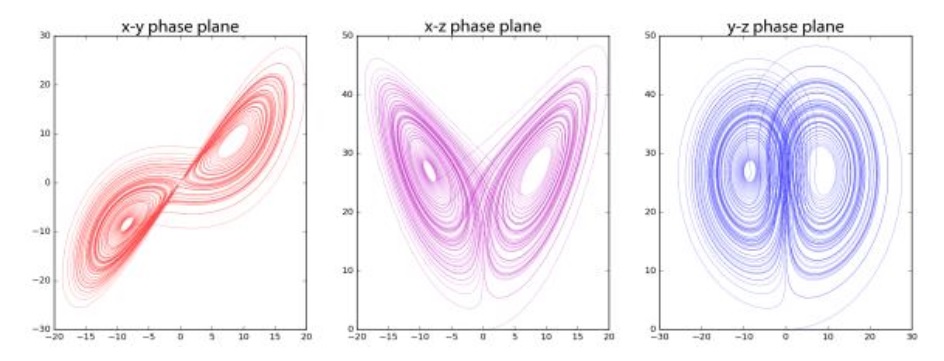Image Encryption Using Lorenz Chaotic System
DOI:
https://doi.org/10.51173/jt.v5i1.840Keywords:
Data Security, Cryptography, Image Encryption, Chaos System, Lorenz Chaotic System, Pixel DestroyAbstract
In the age of the Internet, a lot of images are circulated among users, and some of these images contain financial or personal information that requires confidentiality. Encryption algorithms existed for a long time, and the data used was focused on the text data, while the multimedia data was neglected for a long time. In addition, there are significant shortcomings in 3D image coding techniques. This paper proposed a method for image encrypted and decrypted electronically using the Lorenz chaotic system, the supposed algorithm was developed by using the three equations of the Lorenz system, before that, the image pixels are destroyed using reversible shifting and rotating processes to increase the randomness of the encrypted pixels and thus the difficulty of cracking the cipher. Then he supposed technique gave the following results: The average entropy calculation was (7.285) before image encryption and (7.9974) after image encryption with an average NPCR of (99.65%) and UACI was (30.35%) this confirms that the proposed method is reliable and applicable. Moreover, the suggested technique gives the best outcomes when compared to other similar works.
Downloads
References
S. R. Maniyath and V. Thanikaiselvan, “An efficient image encryption using deep neural network and chaotic map,” Microprocessors and Microsystems, vol. 77, p. 103134, 2020.
M. T. Gaata and F. F. Hantoosh, “An efficient image encryption technique using chaotic logistic map and rc4 stream cipher,” International Journal of Modern Trends in Engineering and Research, vol. 3, no. 9, pp. 213–218, 2016.
S. Ahadpour, Y. Sadra, and Z. ArastehFard, “A novel chaotic encryption scheme based on pseudorandom bit padding,” arXiv preprint arXiv:1201.1449, 2012.
C. L. Chowdhary, P. V. Patel, K. J. Kathrotia, M. Attique, K. Perumal, and M. F. Ijaz, “Analytical study of hybrid techniques for image encryption and decryption,” Sensors, vol. 20, no. 18, p. 5162, 2020.
A. Xing-Xing, S. Ke-Hui, H. Shao-Bo, and W. Hui-Hai, “Design and application of multi-scroll chaotic attractors based on simplified Lorenz system,” Acta Physica Sinica, vol. 63, no. 12, 2014.
G. Chen, Y. Mao, and C. K. Chui, “A symmetric image encryption scheme based on 3D chaotic cat maps,” Chaos, Solitons & Fractals, vol. 21, no. 3, pp. 749–761, 2004.
G. Alvarez, F. Montoya, M. Romera, and G. Pastor, “Cryptanalysis of a discrete chaotic cryptosystem using external key,” Physics Letters A, vol. 319, no. 3–4, pp. 334–339, 2003.
M. Zeghid, M. Machhout, L. Khriji, A. Baganne, and R. Tourki, “A modified AES based algorithm for image encryption,” International Journal of Computer and Information Engineering, vol. 1, no. 3, pp. 745–750, 2007.
C. He, K. Ming, Y. Wang, and Z. J. Wang, “A deep learning based attack for the chaos-based image encryption,” arXiv preprint arXiv:1907.12245, 2019.
M. W. Fakhr, “A multi-key compressed sensing and machine learning privacy preserving computing scheme,” in 2017 5th International Symposium on Computational and Business Intelligence (ISCBI), 2017, pp. 75–80.
F. Hu, J. Wang, X. Xu, C. Pu, and T. Peng, “Batch image encryption using generated deep features based on stacked autoencoder network,” Mathematical Problems in Engineering, vol. 2017, 2017.
A. N. Kengnou Telem, H. B. Fotsin, and J. Kengne, “Image encryption algorithm based on dynamic DNA coding operations and 3D chaotic systems,” Multimedia Tools and Applications, vol. 80, no. 12, pp. 19011–19041, 2021.
M. Tanveer et al., “Multi-images encryption scheme based on 3D chaotic map and substitution box,” IEEE Access, vol. 9, pp. 73924–73937, 2021.
M. A. Lone and S. Qureshi, “RGB image encryption based on symmetric keys using Arnold transform, 3D chaotic map and affine hill cipher,” Optik, vol. 260, p. 168880, 2022.
F. Masood, J. Ahmad, S. A. Shah, S. S. Jamal, and I. Hussain, “A novel hybrid secure image encryption based on julia set of fractals and 3D Lorenz chaotic map,” Entropy, vol. 22, no. 3, p. 274, 2020.
T. Li, W. Yan, and Z. Chi, “A new image encryption algorithm based on optimized Lorenz chaotic system,” Concurrency and Computation: Practice and Experience, vol. 34, no. 13, p. e5902, 2022.
O. M. Al-Hazaimeh, M. F. Al-Jamal, N. Alhindawi, and A. Omari, “Image encryption algorithm based on Lorenz chaotic map with dynamic secret keys,” Neural Computing and Applications, vol. 31, no. 7, pp. 2395–2405, 2019.
Z. Wu, P. Pan, C. Sun, and B. Zhao, “Plaintext-related dynamic key chaotic image encryption algorithm,” Entropy, vol. 23, no. 9, p. 1159, 2021.
I. Grigorenko and E. Grigorenko, “Chaotic dynamics of the fractional Lorenz system,” Physical review letters, vol. 91, no. 3, p. 34101, 2003.
J. Ahmad, F. Masood, S. A. Shah, S. S. Jamal, and I. Hussain, “A novel secure occupancy monitoring scheme based on multi-chaos mapping,” Symmetry, vol. 12, no. 3, p. 350, 2020.

Downloads
Published
How to Cite
Issue
Section
License
Copyright (c) 2023 Daniah Abul Qahar Shakir, Ahmad Salim, Seddiq Q. Abd Al-Rahman, Ali Makki Sagheer

This work is licensed under a Creative Commons Attribution 4.0 International License.
















